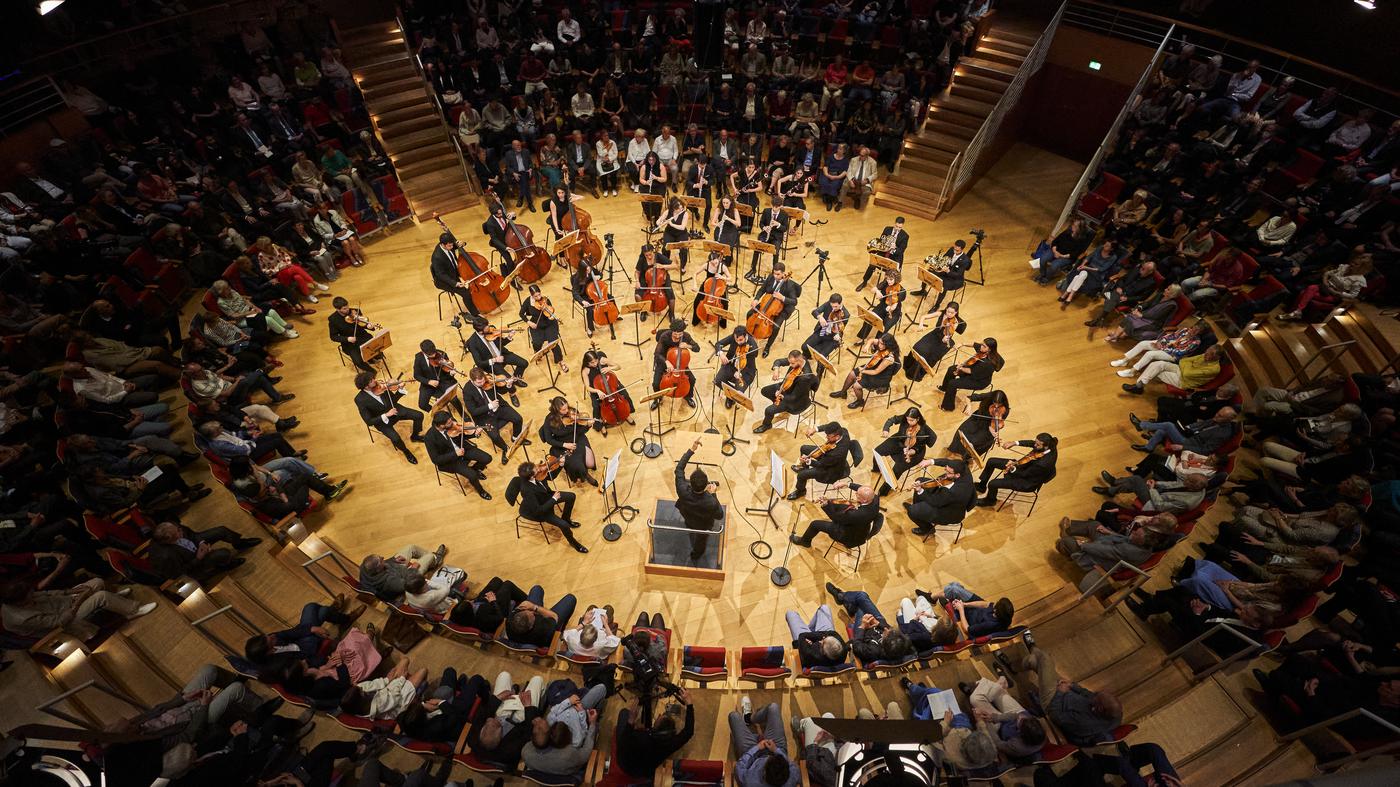Palestinians often don’t have their own voice, this evening there are more than two dozen – so many musicians at once are rarely seen in the Pierre Boulez Saal, which was originally designed as a venue for chamber music. The Filasteen (= Palestine) Young Musicians Orchestra can, after a pandemic-related postponement, perform in Berlin for the first time, with an all-Mozart program and a full-blown symphony at the end of a vibrant, exhilarating, heart-opening concert.
The youngest flower
This orchestra is the most recent flowering of the nationwide musical education system that Daniel Barenboim and the late Edward Said have built up over the past few decades. It was founded in 2019 at the Barenboim-Said Center for Music in Ramallah on the initiative of its director, the Finnish cellist Liina Leijala, with the support of the German Ministry of Foreign Affairs. The orchestra offers young people in the West Bank, for whom even a city like Tel Aviv is out of reach, the opportunity for a professional musical career over the course of eight years of study.
“In a way, music represents the gateway to the world for these young people,” says conductor Nabil Shehata, “they have the hope of playing so well one day that they can get a scholarship and, for example, study at the Barenboim Said Academy in be able to study in Berlin.”
And there they are now, mastering the string divertimento in D major KV 136 at a high level, clear, structured, nothing is washed out. Shehata – until 2008 1st solo double bass player with the Berlin Philharmonic and professor at the Academy in Berlin – seems to be a very good teacher. The architecture of the oval-shaped Boulez Hall means that you can not only see him from behind, but also study his face directly. Shehata is a joyful orchestra conductor, expresses positive feelings directly, conducts at least as much with eyes and facial expressions as with the baton.
Unfortunately, the architecture also has disadvantages. In the Fifth Violin Concerto in A major, the soloist Milan Al-Ashhab basically only plays for one of the five blocks, namely for the one in front of which he is standing directly. He should also turn around – that’s how you can appreciate his qualities, especially in the cadenzas, when the orchestra is silent. His line is wonderfully vocal and narrative, finely balanced, especially in the quiet passages – although he sways with his upper body irritatingly. A minor matter, as long as the sound is right.
After the break, the tempo moves straight into Mozart’s penultimate symphony, the famous one in G minor, and here, too, these young musicians never lose their bearings. The success of Barenboim-Said’s music program in a part of the world that has not been favored by recent history is immediately tangible here. This music was wrested from oppressive conditions.
The fact that at least every now and then something so thoroughly positive comes from a region where dogmatism, suppression, hatred and violence are otherwise the order of the day makes the evening so remarkable.
